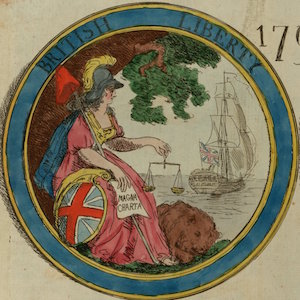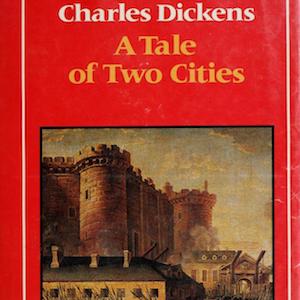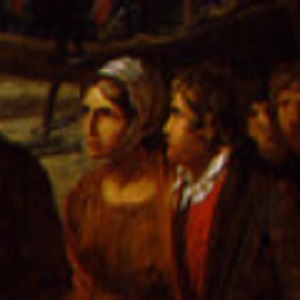Women

The Contrast, 1793 British Liberty/French Liberty
In this color print from 1793, the height of the Terror, two circular drawings appear next to each other, contrasting two types of liberty. English liberty exists, as the figure suggests, but based on the Magna Carta, calm prevails.

Enslaved and Free Blacks in Saint Domingue
This engraving pairs images of enslaved people and free blacks in four categories: dress, deportment, entertainment, and access to water. Although there are differences between the pairs, these are not as great as they might be.

Germaine de Staël, A French Writer Exiled by Napoleon
De Staël was the daughter of Jacques Necker, Louis XVI’s Swiss Protestant finance minister. She published novels, literary tracts, and memoirs and became one of the best-known writers of the early nineteenth century. Napoleon exiled her in 1803.

Arrival of the Royal Family in Paris on 6 October 1789
When the revolutionaries, led by thousands of women, marched to Versailles, they triumphantly seized and then brought the king to Paris, where he would live in the midst of his people.

Dickens, Tale of Two Cities
Charles Dickens’s (1812–70) novels generally appeared in serial form in popular newspapers.

Watch Yourself or You'll be a Product for Sale
The women in this image appear to be tempted to a life of prostitution. The female figure in the left foreground gestures toward the door but remains modestly attired. Once inside, the women are there for the pleasure of men and wear revealing or little clothing.

The Fatherland in Danger
This painting of the period by Gillaume Guillon Lethière shows the emotion caused by the prospect of loved ones departing for the army. Women had to part with their families in order to support the nation in its time of need. Notice the female statue overlooking the scene.

An Example of Heroic Courage
In this rendition of an incident from the Vendée rebellion, an ordinary woman is shown standing up to the rebels. It comes from a series of heroic images of the Revolution and shows that women could be heroines for the Republic.

The Fountain of Regeneration
In this engraving of the Festival of Reunion or Unity of 10 August 1793, a female statue of Nature in the form of the Egyptian goddess Isis represents the regeneration of the French people. It sits on the site of the Bastille prison, whose fall signaled the beginning of the Revolution.

The Republic
Under the monarchy, the king was the country’s symbolic center. Removing him and establishing a republic made necessary not only a new constitution but also a new set of symbols.